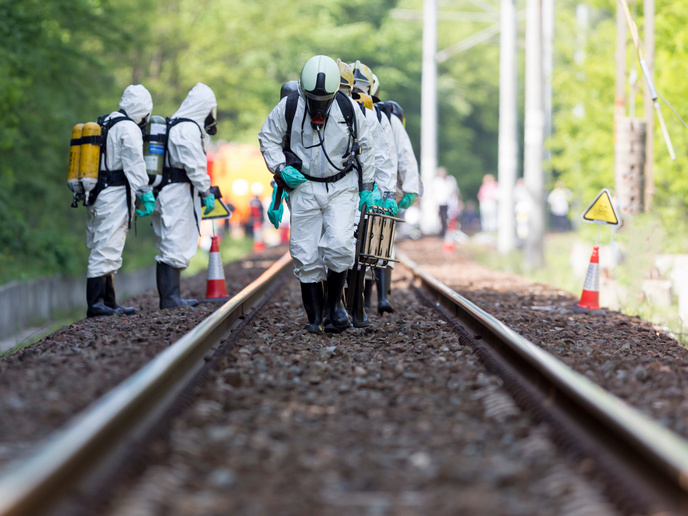The device enhancing our protection from chemical threats
Traditional chemical threat detectors, relying on ion mobility or mass spectrometry, are often bulky and expensive. While immunoassay-based detection offers more specificity, it can’t detect the full range of evolving threats.
AI-enabled Raman-SERS handheld device
The EU-funded SERSing(opens in new window) project has developed an artificial intelligence (AI)-enabled Raman-SERS handheld device, able to rapidly detect and identify liquid chemical hazards at low concentrations, with a gas equivalent under development. Raman spectroscopy(opens in new window) (RS) is a chemical analysis technique used to identify unknown, suspicious solid or liquid compounds. In the surface-enhanced Raman spectroscopy (SERS) system, geo-tagged data about the threat is transmitted to an online platform for swift response decisions. “Our device can be used by first responders, installed in fixed locations and mounted on robots or drones,” explains project coordinator Tomas Rindzevicius from Silmeco(opens in new window) in Denmark. “When we started, AI-driven SERS data analysis was relatively new; it has proved to be an outstanding addition to our detection toolbox.”
Benefits of more sensitive RS
The SERS substrates developed by SERSing are already used by project partner Serstech in their SERS kit, which can be used to detect and identify various chemical threats in liquid samples. The Serstech device is equipped with geolocation capabilities, tracking the location of where samples are taken, along with their movement – critical in field operations. The device can also be remotely connected, transmitting data to a central control system or cloud-based platform, and multiple devices can work in coordination, providing a comprehensive threat overview. “This real-time monitoring enhances decision-making, allowing teams to quickly respond, managing resources and containing threats more efficiently. The system can also be trained to detect emerging hazards as they develop, improving overall situational awareness and safety,” says Rindzevicius.
SERSing behind new groundbreaking invention
Most recently, the project has sparked several patent applications – including one from the Swedish Defence Research Agency(opens in new window) (FOI). The Swedish FOI leveraged some of the SERSing project’s work in SERS to develop a new, patent-pending solution that could enable the high-sensitivity, rapid detection of various nerve agents and pesticides in the liquid and gas phase. What makes the FOI method so innovative is its use of a patented compound to functionalise SERS surfaces. “Think of this compound as a nano-sized antenna that can help us pick up SERS signals from nerve agents that are either in a gas or vapour phase or that are embedded into complex multicomponent fluids,” explains Rindzevicius. According to Rindzevicius, the FOI invention will help to further the SERSing project’s goal of building cost-efficient and reliable handheld devices for detecting chemical warfare agents (CWAs) and pesticides in the liquid and gas phase. In fact, Serstech is considering licensing the patent rights from FOI once the invention is filed. “Working with CWAs and related technology isn’t just expensive and time-consuming, it also requires very special knowledge, clearance, facilities and safety protocols – all of which were developed during our work,” says Rindzevicius. “Without the SERSing project, it would have been impossible for FOI to create this exciting new concept, synthesise the compound and, most importantly, rigorously test it.” SERSing’s achievements also align with the needs identified by the EU’s ENCIRCLE(opens in new window) initiative for better hazardous chemicals detection, identification, modelling, risk assessment and impact reduction.



